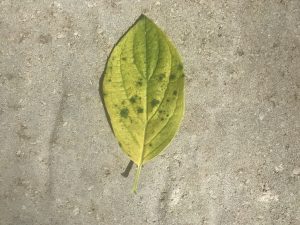Everything about Hydrangea Leaves Turning Yellow
Table of ContentsHow Hydrangea Leaves Turning Yellow can Save You Time, Stress, and Money.Unknown Facts About Hydrangea Leaves Turning YellowExcitement About Hydrangea Leaves Turning YellowThe Greatest Guide To Hydrangea Leaves Turning Yellow
These issues are easy to determine and deal with if you take steps prior to root rot sets in. A moisture meter can help assist you to the most effective technique of adjustment (Hydrangea Leaves Turning Yellow). Big fallen leaves frequently look saggy during the afternoon heat. When they stop working to cheer up in the night or still look shrivelled in the morning, your plant might be overwatered.Remove the plant from the soil and prune out any roots that aren't white and swollen (plump). Replant in a brand-new location or function some sand into the dirt for better drainage.
Include a little bit of distilled water, stir the active ingredients, and drain pipes the extra water. Place a p, H testing strip in and wait on a reading. You can utilize an inexpensive dampness and ph testing meter which will certainly likewise come in convenient later when you wish to inspect your plant for underwatering and overwatering.
The very best way to do that is with dirt modifications. Sphagnum moss or peat moss avoids the soil from condensing and betters dirt water drainage while likewise elevating the soil's level of acidity. You can scatter sulfur chips in your hydrangea soil also. However, the simplest means is to merely use a fertilizer that aids preserve the proper acidity in the dirt while also feeding the plant.
Top Guidelines Of Hydrangea Leaves Turning Yellow
This is one good reason to repot houseplants regularly (though there are others, such as root growth for instance). It is likewise why houseplants need a much stricter fertilizing regular than the majority of outside plants. When a hydrangea houseplant lacks nutrients, its leaves will certainly be the initial to reveal the signs.

You will likewise need to fertilize the plant manually and normal periods. When spring begins in March, it's the active expanding season for numerous houseplants, including hydrangeas.
The dripline is the area situated under the vegetation that is the outermost away from the facility of the plant. Instead than using feed to the center of the plant it is best to focus it mainly in the external areas of the pot. If you 'd rather make use of a slow-release fertilizer such as granular or spike plant food, after that cover either type with some dirt after you place them.
8 Simple Techniques For Hydrangea Leaves Turning Yellow

Although the hydrangea is remarkably frost-resistant, when temperatures begin entering into the 20s, the plant is in serious threat. If the temps remain in the low 10s, that risk is more extreme still. Undoubtedly this is more of an interest in outside plants so if you maintain potted hydrangea outside you must bring them inside your home in very winter problems or perhaps think about relocating them inside for the duration of the winter.

A dehydrated hydrangea, A large issue with many houseplants is origin rot. Root rot takes place when you overwater a plant and due to the fact that it is such an usual problem (especially with succulents) many houseplant proprietors are afraid of overwatering their plants. However, hydrangeas require even more watering that the majority of other common houseplants and can end up being dehydrated when they are underwatered (Hydrangea Leaves Turning Yellow).
The Only Guide to Hydrangea Leaves Turning Yellow
Be absolutely sure that your hydrangea is dehydrated due to a lack of water and not due to it be offered too much water (more on this later). Overwatering is a major trouble if you skimp on its water demands also a little bit, your hydrangea will her latest blog certainly be quick to show it.
, you will rapidly tell if the plant requires water. To obtain your hydrangea sprinkling habits on the right track, you need to be mindful about the dampness degrees in its soil.
When you remove your finger from damp soil it will certainly have tiny quantities of soil residue stayed with it. Dry soil will certainly suggest your finger appears tidy or with dry soil that is conveniently surprised. If it's moist, and the plant has yellow fallen leaves after that the plant has actually likely been overwatered and you will need to follow the advice offered in the section listed below.